Construction of the KIS Drip Filter System
– Filters 40 gallons/day
Click here to buy the KIS Drip Filter System.
Drilling Holes
1. Turn the top bucket upside down and locate the center of the bottom, of the bucket.
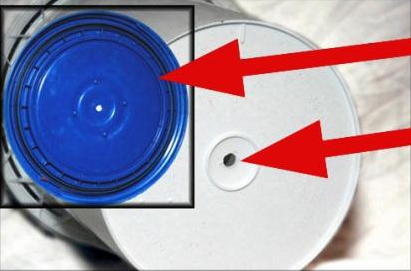 2. Drill a 5/8 inch hole—this is for the filter.
2. Drill a 5/8 inch hole—this is for the filter.
3. Place the top bucket on the lid, for the bottom bucket. Going through the hole, in the top bucket, mark the lid. Drill a 5/8 inch hole.
NOTE: It is very important that the holes in the bucket and the lid match perfectly.
4. Going to the bottom bucket, locate a spot that is 2 inches above the bottom rim of the bucket and drill a ¾ inch hole. This will be where the spigot is installed.
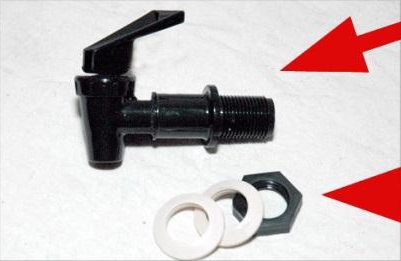 5. Drill one small hole just below the rim of each bucket. This will be a vent hole.
5. Drill one small hole just below the rim of each bucket. This will be a vent hole.
Installing the Spigot
6. Remove the spigot from the plastic package.
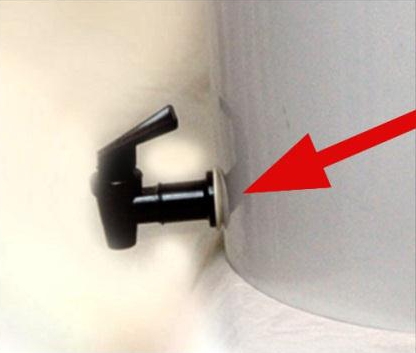 7. Place one washer on the spigot, flat side against the flange on the spigot, and insert the spigot into the hole, in the bottom bucket.
7. Place one washer on the spigot, flat side against the flange on the spigot, and insert the spigot into the hole, in the bottom bucket.
8. Place the 2nd washer onto the spigot, angled side towards the wall of the bucket, and begin to screw on the nut.
9. You may turn the spigot, instead of the nut, until it is difficult to turn the spigot.
10. Straighten the spigot so the handle is parallel to the bottom of the bucket.
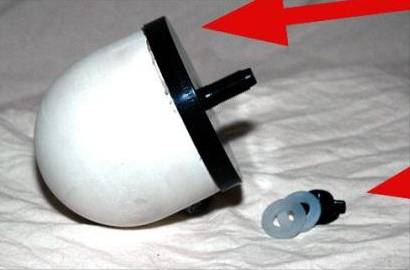 11. Fill about 1/3 of the bucket with water and check for leaks.
11. Fill about 1/3 of the bucket with water and check for leaks.
12. If a leak is detected repeat step 9.
Installing the Filter
13. Remove the filter from its box.
14. Place one washer on the stem of the filter.
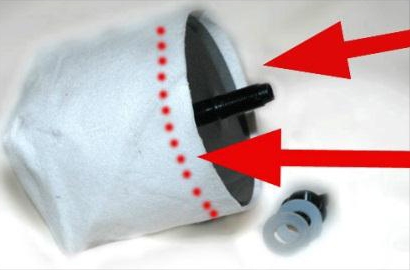 15. Insert the stem through the hole in the top bucket and through the lid of the bottom bucket.
15. Insert the stem through the hole in the top bucket and through the lid of the bottom bucket.
16. Place the 2nd washer on the stem and attach the wing nut.
17. Turn the wing nut until tight.
18. Fill about 1/3 of the top bucket with water and check for leaks.
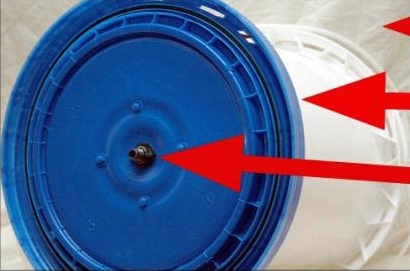 19. If a leak is detected repeat step 17.
19. If a leak is detected repeat step 17.
20. Place the sock over the filter and use one rubber band to hold the sock in place.
NOTE: It is very important that there is not a leak around the filter system. The clean water, in the bottom bucket, will be contaminated by the water from the top bucket.
Filling Instructions
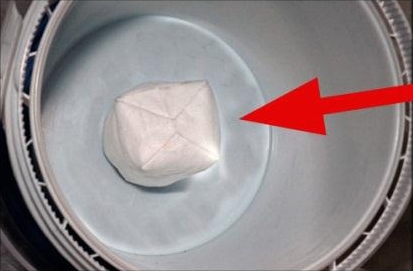 21. Before using the filter system it is recommended to sanitize the buckets with a diluted bleach solution. 1 teaspoon of bleach mixed with 1 gallon of water will do the job.
21. Before using the filter system it is recommended to sanitize the buckets with a diluted bleach solution. 1 teaspoon of bleach mixed with 1 gallon of water will do the job.
22. Wipe down the outside and the inside of each bucket with the bleach solution. Let stand for 3-5 minutes then wipe off with a dry paper towel or cloth towel.
23. Assemble the filter unit and set on a level surface.
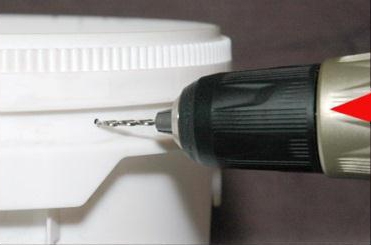 24. Fill the top bucket with water.
24. Fill the top bucket with water.
25. As water is removed from the bottom bucket add that amount of water to the top bucket.
Flow Rate
26. It will usually take a couple of days for the flow rate to reach its’ maximum output—around 1-1.5 gallon per hour. The flow rate increases as the ceramic shell and the mixed media (inside the ceramic shell) become saturated with water.
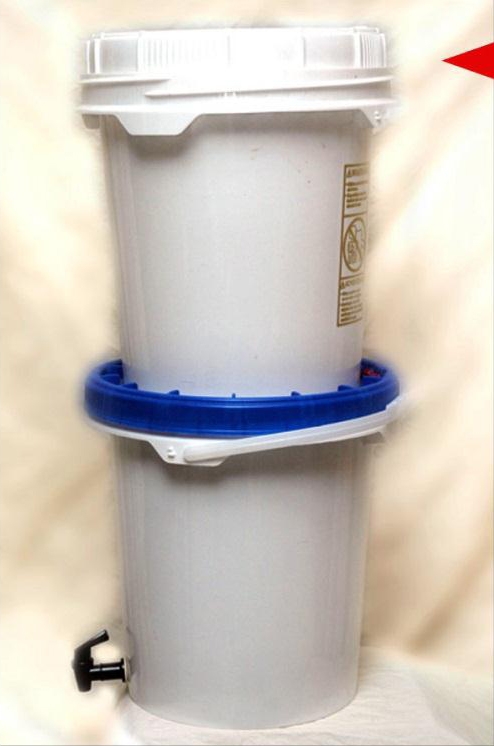 Cleaning Instructions
Cleaning Instructions
27. When the flow rate of the filter decreases, this would indicate that the sock and the filter might need to be cleaned.
28. Using rubber gloves remove the sock and rinse it in clean water.
29. As the filter is used and is in contact with dirty water the white ceramic shell will become stained and the pores of the clay will become clogged with particulates.
30. Using a Scotch-Brite pad (green scrub pad) GENTLY rub the surface of the filter. This will remove some of the stain and the dirt.
31. Rinse with clean (filtered) water.
32. Reassemble the filter unit and fill it with water.
NOTE: Never use any type of soap while cleaning the buckets, the socket or the filter. This will ruin the filter and will no longer function properly.
IMPORTANT: Once you start using the filter, the activated carbon is only good for about 6-8 months. The ceramic shell, which is filtering out the bacteria, will last between 1-2 years. The carbon, inside the ceramic shell, will become packed over a period of time and you will need to shake the filter, to loosen the carbon. Replacing the filter depends upon the flow rate. If the flow rate is very slow even after cleaning the filter, it should be replaced.
Click here to buy the KIS Drip Filter System.

